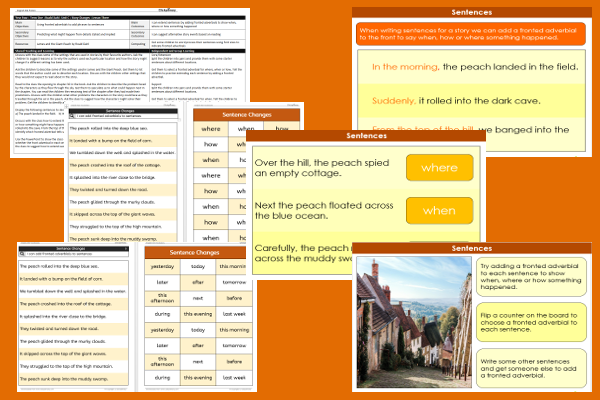Lesson Three – When, Where, How

This English teaching pack for Key Stage Two gets the children to select and add fronted adverbials to a range of different sentences to show when, where, or how something happened in a story by Roald Dahl.
The class can suggest how a narrative story might change and develop with some alternative characters and settings as part of the narrative structure.
Download this teaching pack including a lesson plan, classroom activities and an interactive presentation to select and add fronted adverbials to a range of different sentences to show when, where, or how something happened in a story by Roald Dahl
Activities in this teaching pack include a differentiated worksheets to model how to add a range of different fronted adverbials to example sentences to show when, where, or how something happened in a narrative story by Roald Dahl.
The interactive presentation gets the children to explore how to add fronted adverbials to sentences to show when, where, or how something happened in a story.
This lesson is part of an English scheme of work to get the children to explore and record different ways of changing characters, settings and events in a story by a significant author, add the suffix ing to words with stressed final consonants and extend sentences using conjunctions and fronted adverbials. There are teaching activities for shared learning, differentiated worksheets to support independent learning and interactive presentations to introduce concepts and key skills.
-

Length Calculations
Practise using number calculations skills for addition, subtraction, division and multiplication when solving problems related to length measurements
-

Maths Calculations Assessment
Assess abilities in solving a range of different number problems for addition and subtraction when working with informal and formal written calculations
-

Determinant Lists
Explain and model how to make lists of objects used and found in different locations to match the correct determinants of a and an
-

English SPAG Assessment
Assess abilities in composing sentences for fiction and non-fiction using the correct spellings, punctuation marks and grammar vocabulary phrases
